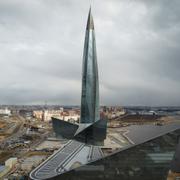
Wallström och Thunberg besökte Zelenskyj i Kyiv
Den tidigare utrikesministern Margot Wallström (S) och klimataktivisten Greta Thunberg har besökt Ukrainas president Zelenskyj i Kyiv, rapporterar TT.
De ingår i en internationell arbetsgrupp som undersöker krigets konsekvenser för miljön, inte minst i ljuset av dammsprängningen i Kachovka.
”Allvarliga miner inför en allvarlig och meningsfull uppgift. Slava Ukraini!” skriver Wallström på Twitter.
Zelenskyj själv beskriver mötet som ”en stark signal till Ukraina”, enligt nyhetsbyrån.
bakgrund
Dammsprängningen i Kachovka
Wikipedia (en)
The Kakhovka Dam in Ukraine was destroyed in the early hours of 6 June 2023, causing extensive flooding along the lower Dnieper river (also known as the Dnipro) in Kherson Oblast. The dam was under the control of the Russian military, which had seized it in the early days of the Russian invasion of Ukraine. Experts assess that Russian forces likely blew up the dam.The dam was 30 m (98 ft) tall and 3.2 km (2.0 mi) long. The destroyed part of the dam was about 85 m (279 ft) long. As of 8 June, the average level of flooding in the Kherson region was 5.61 m (18.4 ft), according to local officials.There were signs of an explosion at the time of the breach. Both Ukrainian and Russian sources reported hearing blasts from the dam's hydroelectric power station, regional seismometers detected explosions in the area, and a satellite detected the infrared heat signature of an explosion. Russian forces were accused of blowing up the dam to hinder the planned Ukrainian counter-offensive, but this was denied by Russian authorities.
Water levels in the Kakhovka Reservoir, controlled by Russia, had been rising for months and were at a 30-year high when the dam failed. Thousands of residents downstream were evacuated, and floods submerged several villages in Ukrainian- and Russian-controlled areas. By 21 June, 58 people were reported to have been killed and 31 were missing. Flooding killed many animals and damaged farmland, homes, businesses and infrastructure. The loss of water from the reservoir could threaten the long-term water supply to Russian-controlled Crimea and the Zaporizhzhia Nuclear Power Plant, but there was no immediate risk to either.
Omni är politiskt obundna och oberoende. Vi strävar efter att ge fler perspektiv på nyheterna. Har du frågor eller synpunkter kring vår rapportering? Kontakta redaktionen



